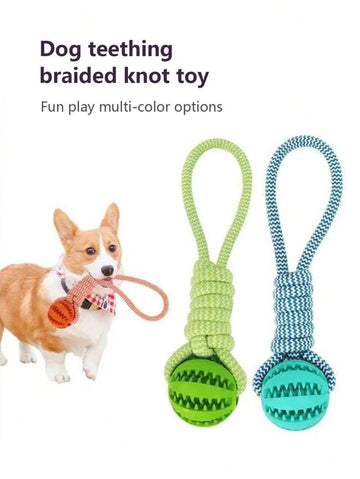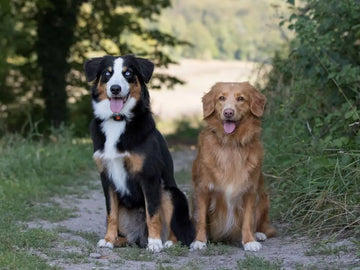Dogs are natural chewers, but giving them the wrong toy could do more harm than good. Have you ever watched your dog gnawing away at something and wondered, “Is this safe?” Choosing the best chew toys for dogs can feel overwhelming, especially with so many options available. While a sturdy toy can satisfy their chewing instincts, one that’s too hard could lead to cracked teeth or other injuries. In this article, we’ll help you figure out if your dog’s chew toy is too hard and how to choose one that’s safe, fun, and durable. After all, their health and happiness matter most!
The Risks of Chew Toys That Are Too Hard
The wrong toy can create serious problems for your furry companion. Hard toys, while seemingly durable, can cause significant dental damage or gum injuries over time. Many pet owners assume a tough toy is best because it lasts longer, but what about your dog’s teeth? If your dog is an aggressive chewer, it’s tempting to go for something unbreakable—but this could backfire. Finding the perfect balance is essential.
How to Test If a Chew Toy Is Too Hard
Here are some simple and effective methods to ensure your dog’s toy is safe:
The Thumbnail Test
Press your thumbnail into the chew toy’s surface. If the material doesn’t give even slightly, it’s too hard. A little flexibility is key to preventing dental fractures.
Your Kneecap Test
Here’s a handy rule: if you wouldn’t comfortably hit your kneecap with the chew toy, it’s too hard for your dog. This simple test is a quick way to evaluate safety.
Observe Your Dog’s Reaction
Is your dog struggling to hold the toy between their teeth or seeming hesitant to chew? That might indicate discomfort caused by excessive hardness. Remember, a safe chew toy should be challenging but not painful.
The Safest Materials for Dog Toys
When choosing dog toys, focus on the material. The goal is to find something durable yet gentle on teeth. Here are some of the best options:
Rubber Chew Toys
Rubber is flexible yet sturdy, making it one of the best materials for chew toys. Brands like Kong offer great options that stand up to heavy chewing while protecting your dog’s teeth.
Rope Toys
Rope toys are fantastic for tug-of-war games or light chewing, especially for dogs with softer mouths. Just be sure to supervise playtime and discard the toy if it starts to unravel.
Soft Plastics for Puppies
For young dogs, good chew toys for puppies are softer and more forgiving. These are designed to soothe teething discomfort while protecting delicate puppy teeth from damage.
Age-Appropriate Chew Toys
Your dog’s age plays a critical role in determining the type of chew toy they need.
For Puppies
Puppies are in a critical teething phase and require toys that are soft, flexible, and easy to grip. The best puppy chew toys are often made of soft rubber or specially designed materials to soothe aching gums. Avoid anything too hard, as it can harm their developing teeth.
For Adult Dogs
Adult dogs, especially aggressive chewers, need durable materials like tough rubber or reinforced fabric. However, even for strong chewers, overly hard toys like antlers or solid nylon can cause chipped teeth, so it’s best to choose something with a little give.
For Senior Dogs
Senior dogs may have weaker teeth and gums. Softer toys are ideal for their needs, as they reduce the risk of injury while still providing a satisfying chewing experience.
How to Make Playtime Safe
Even the safest toys can become dangerous without proper monitoring. Here are some tips to ensure a worry-free play session:
- Supervise Playtime: Always keep an eye on your dog while they’re chewing, especially with a new toy.
- Inspect Regularly: Check toys for wear and tear. Broken pieces or sharp edges can be harmful.
- Size Matters: Choose a toy size that matches your dog. A small toy for a large dog can be swallowed, while a big toy might frustrate a small dog.
Why Safe Chew Toys Matter
Dogs rely on chewing for entertainment, stress relief, and dental health. The right toy provides them with an outlet for their natural instincts while keeping their teeth and gums healthy. A toy that’s too hard, however, can lead to pain, injury, or costly vet visits. Investing in best chew toys for dogs isn’t just about fun—it’s about ensuring their overall well-being.
Final Thoughts
At the end of the day, your dog’s joy is what matters most. Take the time to choose toys that are safe, engaging, and suited to their needs. Watching your pup happily chew away, tail wagging with excitement, is one of the best feelings as a dog parent. Whether it’s a sturdy rubber toy for your power chewer or one of the best puppy chew toys for your teething furball, selecting the right chew toy makes all the difference.
Your dog’s playful energy, wagging tail, and those goofy, love-filled looks they give you are priceless. So, make sure their toys not only bring them joy but also keep them safe and healthy. Next time you shop for a chew toy, take a moment to feel the material, consider their chewing habits, and think about their unique needs. After all, they deserve nothing less than the best!










